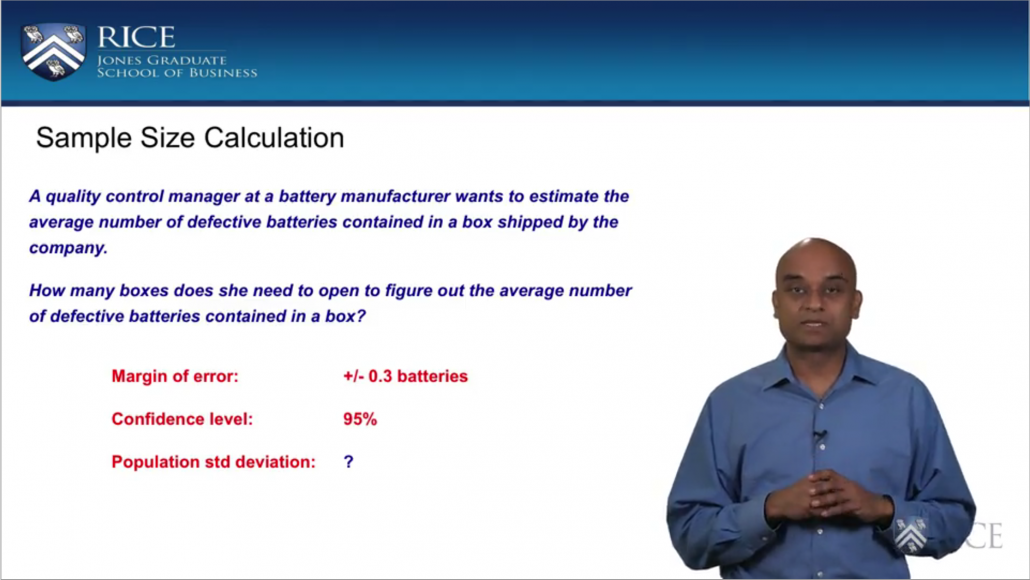DESCRIPTION
Part of the Business Statistics and Analysis Specialization.
Confidence intervals and hypothesis tests are very important tools in the business statistics toolbox. A mastery over these topics will help enhance your business decision making and allow you to understand and measure the extent of ‘risk’ or ‘uncertainty’ in various business processes.
This is the third course in the specialization “Business Statistics and Analysis” and the course advances your knowledge about Business Statistics by introducing you to confidence intervals and hypothesis testing. We first conceptually understand these tools and their business application. We then introduce various calculations to constructing confidence intervals and to conduct different kinds of hypothesis tests. These are done by easy to understand applications.
Week 1, Module 1: Confidence Interval – Introduction
In this module you will get to conceptually understand what a confidence interval is and how is its constructed. We will introduce the various building blocks for the confidence interval such as the t-distribution, the t-statistic, the z-statistic and their various excel formulas. We will then use these building blocks to construct confidence intervals.
Topics covered include:
- Introducing the t-distribution, the T.DIST and T.INV excel functions
- Conceptual understanding of a Confidence Interval
- The z-statistic and the t-statistic
- Constructing a Confidence Interval using z-statistic and t-statistic
Week 2, Module 2: Confidence Interval – Applications
This module presents various business applications of the confidence interval including an application where we use the confidence interval to calculate an appropriate sample size. We also introduce with an application, the confidence interval for a population proportion. Towards the close of module we start introducing the concept of Hypothesis Testing.
Topics covered include:
- Applications of Confidence Interval
- Confidence Interval for a Population Proportion
- Sample Size Calculation
- Hypothesis Testing, An Introduction
Week 3, Module 3: Hypothesis Testing
This module introduces Hypothesis Testing. You get to understand the logic behind hypothesis tests. The four steps for conducting a hypothesis test are introduced and you get to apply them for hypothesis tests for a population mean as well as population proportion. You will understand the difference between single tail hypothesis tests and two tail hypothesis tests and also the Type I and Type II errors associated with hypothesis tests and ways to reduce such errors.
Topics covered include:
- The Logic of Hypothesis Testing
- The Four Steps for conducting a Hypothesis Test
- Single Tail and Two Tail Hypothesis Tests
- Guidelines, Formulas and an Application of Hypothesis Test
- Hypothesis Test for a Population Proportion
- Type I and Type II Errors in a Hypothesis
Week 4, Module 4: Hypothesis Test – Differences in Mean
In this module, you’ll apply Hypothesis Tests to test the difference between two different data, such hypothesis tests are called difference in means tests. We will introduce the three kinds of difference in means test and apply them to various business applications. We will also introduce the Excel dialog box to conduct such hypothesis tests.
Topics covered include:
- Introducing the Difference-In-Means Hypothesis Test
- Applications of the Difference-In-Means Hypothesis Test
- The Equal & Unequal Variance Assumption and the Paired t-test for difference in means.
- Some more applications
CONTACT
Any questions? Please e-mail RiceOnline@rice.edu

